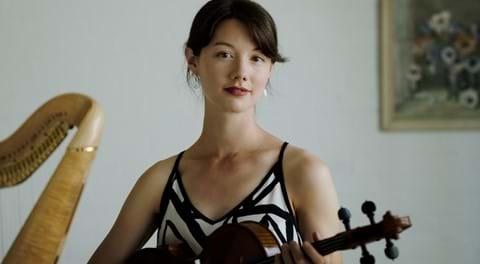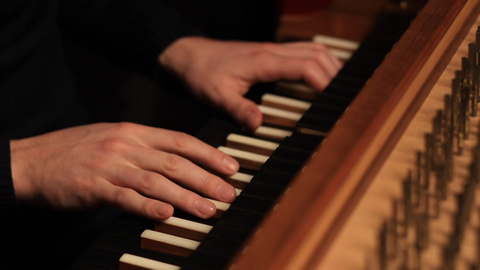We had the pleasure of speaking with Katie to gain insight into the origins of the Wattelseed Ensemble, how she was first drawn to Baroque music, how she fell in love with the viola and much more.
Can you share with us a little bit about yourself?
I’m a Melbourne-based freelance violist, with my fingers in lots of pies (both musical and edible). I play both modern and baroque viola, and I like to keep my working life as varied as I can. I play with large orchestras like the Melbourne Symphony Orchestra, the Australian World Orchestra, and the Australian Brandenburg Orchestra; and with chamber orchestras like the Melbourne Chamber Orchestra and Van Diemen’s Band. My favourite kind of playing is with chamber ensembles – I am part of the Chrysalis Harp Trio, and of course, Wattleseed Ensemble, as well as joining other groups as often as I can. I teach at Monash University and privately, and I have a keen interest in baking, as you might have gathered from my comment up the top.
What’s the history of the Wattleseed Ensemble? How did you all meet and begin working together?
Wattleseed Ensemble is something I’ve been wanting to put together for a few years: a period ensemble dedicated to playing a huge range of repertoire, with an emphasis on new commissions from Australian composers. It’s a collective rather than a fixed personnel group, so it means that we can be flexible, expanding or contracting to suit different repertoire. However, the core group is a baroque string trio – violin, viola, and cello.
The version of Wattleseed that’s playing at Viva Edge is made of up of my colleagues and dear friends, Natalia Harvey on violin and Anna Pokorny on cello. They’re fantastic players, and have the diversity and flexibility to tackle anything from medieval to modern to folk music, all on gut strings!
What was it about the viola that made you fall in love?
Ah, the viola! I’m going to quote Ed Ayres in his ode to the viola, his first love. I don’t think I can say it any better:
“With your reasonable, human-like voice you play me your inner workings of quartets and symphonies, quietly supporting the main tune, relentlessly driving the pulse, doing the behind the scenes work so that others might shine. Then you sing a short melody full of intangible emotion, somewhere between sadness and resignation, and you show me the subtle charisma that is your unique beauty. I love your weight, your stability, your clarity and your mystery. You are my true voice.”
You’ve worked extensively with Baroque repertoire throughout your career. What first drew you to Baroque music, and why have you continued to explore the repertoire?
The first time I really encountered a historically informed approach to baroque music was when I took part in the Australian Youth Orchestra’s Baroque Style Workshop in 2010, with Elizabeth Wallfisch and Neal Peres da Costa. We were playing Vivaldi violin concertos, and as a typical university viola student obsessed with Shostakovich and Prokofiev, I thought ‘oh, boring!’ How wrong I was. While Elizabeth shaped the intricate violin lines, Neal worked with us, the violists and cellists, to reveal how much incredible harmonic and rhythmic power that our seemingly boring inner parts and basslines can have, if they’re played in the right way. Since then, as I explore more of the baroque repertoire, I can’t get over how wonderful the emotions in this music are. The beguiling harmonies and the combination of emotional naiveté and complexity are incredibly engaging, and they give so much to both the player and the audience.
Why do you think it’s important to continue to creatively explore new ways to present chamber music?
In my own projects, I’m always looking for different ways to give performances, and I think it’s incredibly important not to get stuck in a rut. It’s up to us as performers and presenters to be creative with programming, venues, presentation, and how we engage our audiences to prove that. Going to a classical concert should be a real experience, and the things that surround the music should serve to enhance it. Though COVID was in many ways a disaster for the arts, it has also given us a great impetus to reflect on how we present our artform, and to be truly creative in our concerts, and respond with new energy and imagination.
How does your artistic approach change when performing in a less traditional setting, compared to appearing with an orchestra or ensemble in larger, more 'traditional' venue?
I feel that the performers can be more casual, and more approachable than in a traditional setting. When you play with an orchestra, or for a more traditional concert, there’s a level of formality and distance that is expected between the performers and the audience. That certainly serves a purpose – you can’t have a whole orchestra having a chat with the audience from the stage! But I love these kinds of concerts because suddenly both audience and
To buy tickets to Katie's upcoming performance with the Wattleseed Ensemble on Tuesday 29 March, 12pm please click here.


